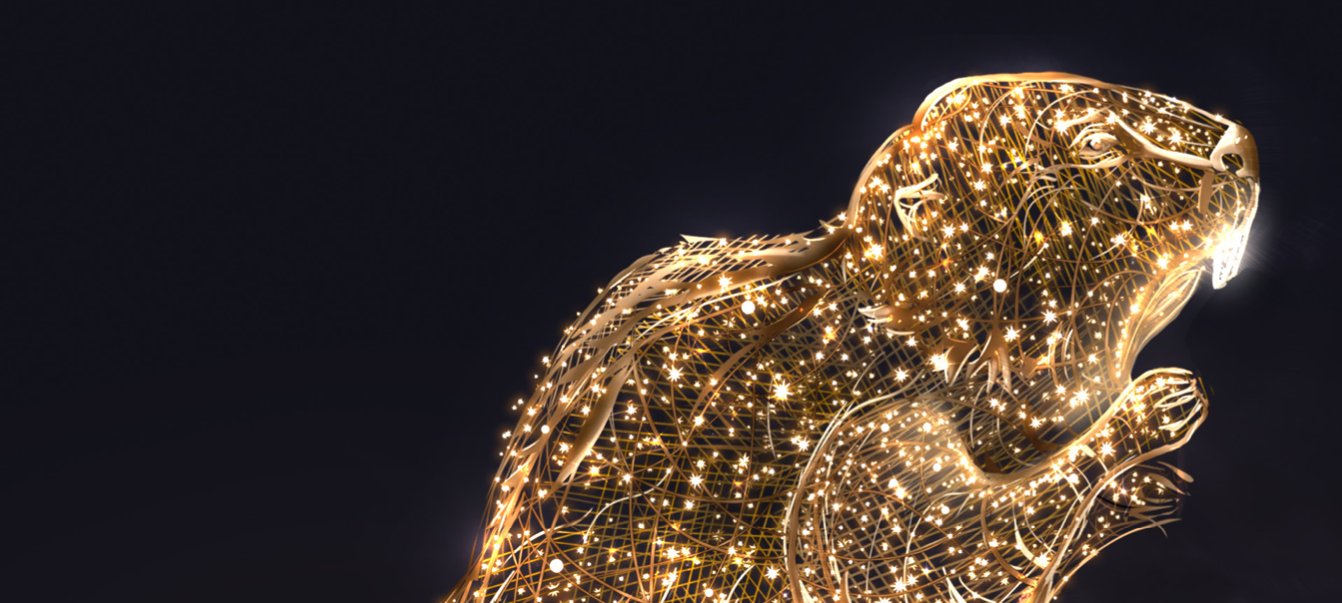Lumiere is excited to announce that Barclay the Beaver has arrived at English Bay!
The Beaver is the national animal of Canada, so it’s no surprise that Stanley Park is home to two families of beavers, one that lives in Beaver Lake and one in Lost Lagoon. This illuminated 12-foot-tall dazzling art installation is best viewed after sunset, much like the animal it depicts as beavers are crepuscular which means they are most active at dawn and dusk. Stanley Park Ecology Society conducts beaver monitoring surveys every morning and evening to understand the Park’s beaver population to help support and manage them. To donate to SPES, click the link below.
https://stanleyparkecology.ca/support-us/donate/
To celebrate Barclay’s arrival, Stanley Park Ecology Society has put together a list of fun facts about Beavers! Read below to find out more about Canada’s national animal:
- Habitat: Stanley Park has two families of beavers, one in Beaver Lake and one in Lost Lagoon. They live in forested aquatic ecosystems throughout Greater Vancouver and across Canada north to the treeline, but are infrequent on the prairies.
- Beavers mate for life. Each beaver lodge houses the parental adults, the yearlings born the previous year, and 2 to 4 newborn kits. The two-year-olds are usually forced to leave and set up their own lodge and dam. No kits were born in the Park in 2020, and we haven’t seen any kits on Lost Lagoon since 2017 which may be because the beavers are old now.
- Diet: Beavers are herbivores and eat tree bark, buds, leaves, pond lily roots, sedges and grasses. They can store fresh branches in an underwater larder over winter.
- Beavers are crepuscular which means they are most active at dawn and dusk – the best times to spot beavers in Stanley Park.
- The beaver is one of the few animals that can completely engineer its environment. Their “busy as a beaver” dams create valuable wetland habitat while storing and filtering the water than trickles through. A beaver dam is a separate structure from the lodge where the beavers live.
- Beavers can hold their breath for 15 minutes under water. They can also close off the back of their mouth so they can chew underwater.
Stanley Park Ecology Society does a lot of conservation work. Read below to find out more about what they do and how you can help:
- Volunteers help SPES conduct beaver monitoring surveys at dawn and dusk. We see them feeding, swimming, scratching, cleaning, resting and occasionally slapping their tails. Understanding the Park’s beaver population supports best management practices.
- Beavers create biodiversity by damming and flooding areas which, in turn, creates wetlands for wildlife. In urban areas, this damming activity may result in downed trees and flooded trails. SPES protects Stanley Park’s trees and vegetation by wrapping them with wire mesh. Some trees and shrubs are left as a food supply for the beavers.
- The Vancouver Park Board continues to work on ways of mitigating flood damage from beaver damming activities. This work is carried out in a very sensitive manner, to minimize the impact on beavers and the surrounding ecosystems.
- Beaver relocation is not allowed under our current laws. Even if it was permitted, it is only a short term solution. Young beavers explore for new territory to start a family so beavers would appear anew in the Park if the current population was removed.
- Please keep dogs leashed and away from the water, and do not feed the beavers.
Calls to Action:
- Join a SPES guided walk in Stanley Park or an online workshop to learn more about beavers. Check the SPES Events Calendar for upcoming programs at https://stanleyparkecology.ca/events/ or subscribe to our monthly Events Bulletin at: https://stanleyparkecology.us11.list-manage.com/subscribe?u=f9e789375d1c477d5af87c10a&id=cd7930be3a
- Learn more: visit the Nature House on Lost Lagoon to see a taxidermy beaver, check out beaver paw prints and ID their gnaw marks on trees. Learn where the beaver lodges are in Stanley Park. You’ll find the Nature House here.
- Donate to SPES to support our wildlife surveys which include annual beaver surveys in the Park. Choose the “Conservation Research” category at https://stanleyparkecology.ca/support-us/donate/
- Volunteer with SPES’s beaver monitoring surveys in Stanley Park. Contact the SPES Volunteer Coordinator for more information at [email protected]
- Become a SPES member! Help us make a positive difference for wildlife in Stanley Park! Visit https://stanleyparkecology.ca/support-us/memberships/


